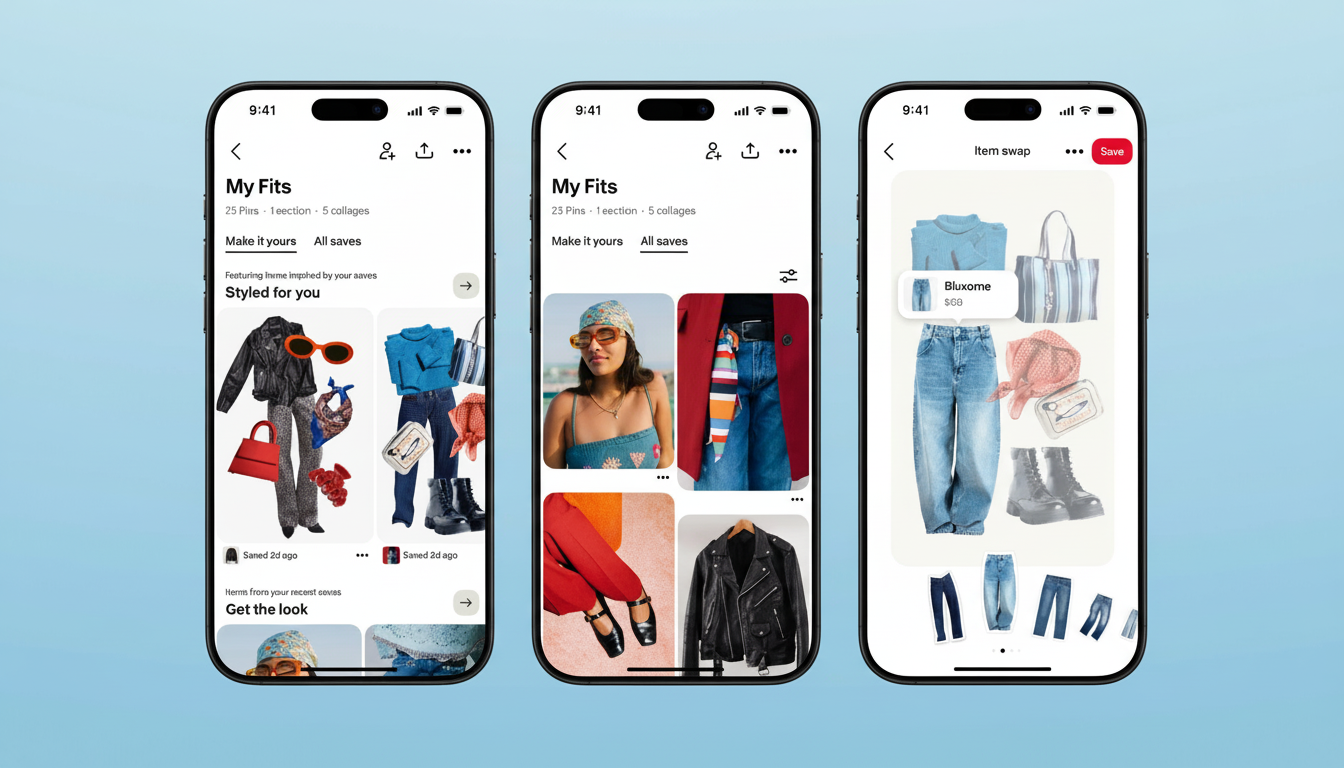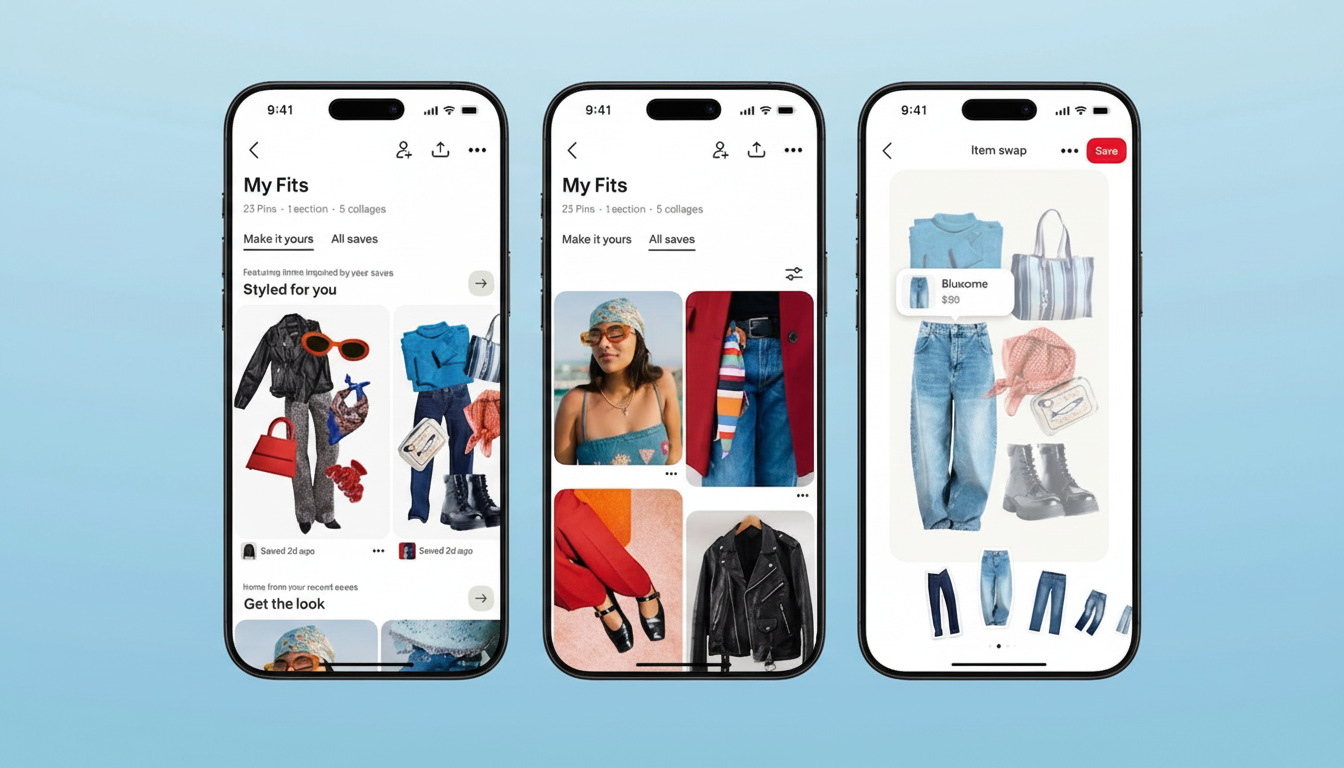Pinterest is releasing experimental new AI tools, which turn its standard pinboards into personalized hubs for style discovery and shopping. The tests feature “Styled for you,” an AI-assisted collage tool for outfit creation, and “Boards made for you,” curated boards that mix editorial curation with machine recommendations. The early tests will start in the United States and Canada, with wider availability later in the coming months.
What Pinterest’s new personalized boards actually do
“Styled for you” allows users to put together looks by mixing and matching clothing and accessories that they have saved, then recommends pieces from their own Pins that pair well with the selection. Tap on anything in the collage, and the AI rotates through saved options to create a full outfit — handy whether you’re building a capsule wardrobe or travel looks or just like trying out seasonal trends without reinventing the wheel.

“Boards made for you” doubles down. These new boards are auto-generated for everyone, pulling together through a combination of editorial tastemaker curation and AI signals like recent saves, category engagement, and ever-changing style trends. It’ll deliver weekly outfit inspo, trending looks to try, and shoppable picks from across the site right in your home feed and inbox — created to feel more like styling inputs, less like search.
Pinterest wants to take boards out of the world of organization and into a space for active inspiration and commerce. The company has been leaning on computer vision and visual search for years; this push adds generative and retrieval-based AI capabilities on top of familiar workflows so inspiration falls into purchase-ready moments with minimal manual curation.
Why this matters for shopping and product discovery
Pinterest’s strength has long been intent: People come to plan projects, outfits, and purchases. Static boards are transformed into bespoke, living galleries that streamline the journey from inspiration to checkout. Look for more shoppable surfaces, richer product metadata, and direct handoffs to merchant catalogs as the experience evolves.
Industry research supports the strategy. AI-driven personalization can increase retail revenue 10–15% when done well, according to McKinsey, and higher when you calculate conversion gains that result from smarter recommendations. For Pinterest, which already lets advertisers target users by life moments and aesthetic preferences, AI-driven boards might prompt higher save rates, outbound clicks, and basket size — all signals of success marketers examine when measuring return on ad spend.
The editorial-meets-AI mashup is also compelling. Fully automated feeds can seem generic or mysterious; editorial guardrails help the platform balance trendy content that its users are already engaging with, keep suggestions fresh, and prevent the stagnation that afflicts many algorithmic suggestion engines.

Balancing AI innovation with user trust and safety
As it leans more heavily on automation, Pinterest is also tightening its grip on AI-generated images. The company has announced plans to identify AI-generated or AI-manipulated images and is providing users with tools to reduce the volume of AI-based content they view. Those gestures reflect increased user appreciation for synthetic media and a larger industry trend toward provenance and transparency.
On the personalization front, ethical design will be more important. Turning over ideas, clear controls, and more sources for trends can combat “filter-bubble” fatigue, while verifiable merchant attribution creates credibility in the shoppable suggestions. That transparency — and the precision of product matching — will determine if AI boards turn into a reliable discovery channel, or just another playground.
Update Rounds Out with New Organization Tabs
As part of the AI experiments, Pinterest is also testing new board-level tabs to make browsing easier. “Make It Yours” showcases fashion and home décor personalized to a user’s saved Pins. “More Ideas” brings up related recommendations across categories including beauty, recipes, and art. There’s also an “All Saves” tab to provide a straight line to every Pin you’ve saved, reducing the friction of scavenging through older boards. These navigation changes will be rolling out globally over time.
Competitive context and what to watch as tests expand
Social platforms are in a battle to marry recommendation engines and shopping: In short-video feeds, instant product links overlay posts; marketplaces increasingly deploy AI stylists and virtual try-ons. Pinterest’s strategy reimagines its core asset, the board, as a personalized canvas that can change daily and offers it a differentiator against video-first competitors.
Metrics to monitor, as these features roll out, include the percentage of sessions that engage with AI boards, save and click-through rates of “Styled for you” collages, and merchant performance from AI-surfaced products. If the tests increase retention and conversion without endangering user trust, boards could become Pinterest’s most crucial AI-native surface — and a template for how inspiration and commerce can cohabit without taking over the feed.

